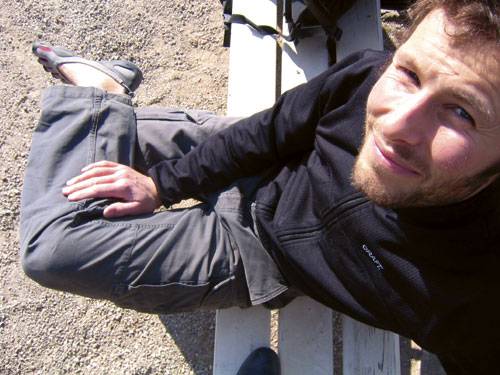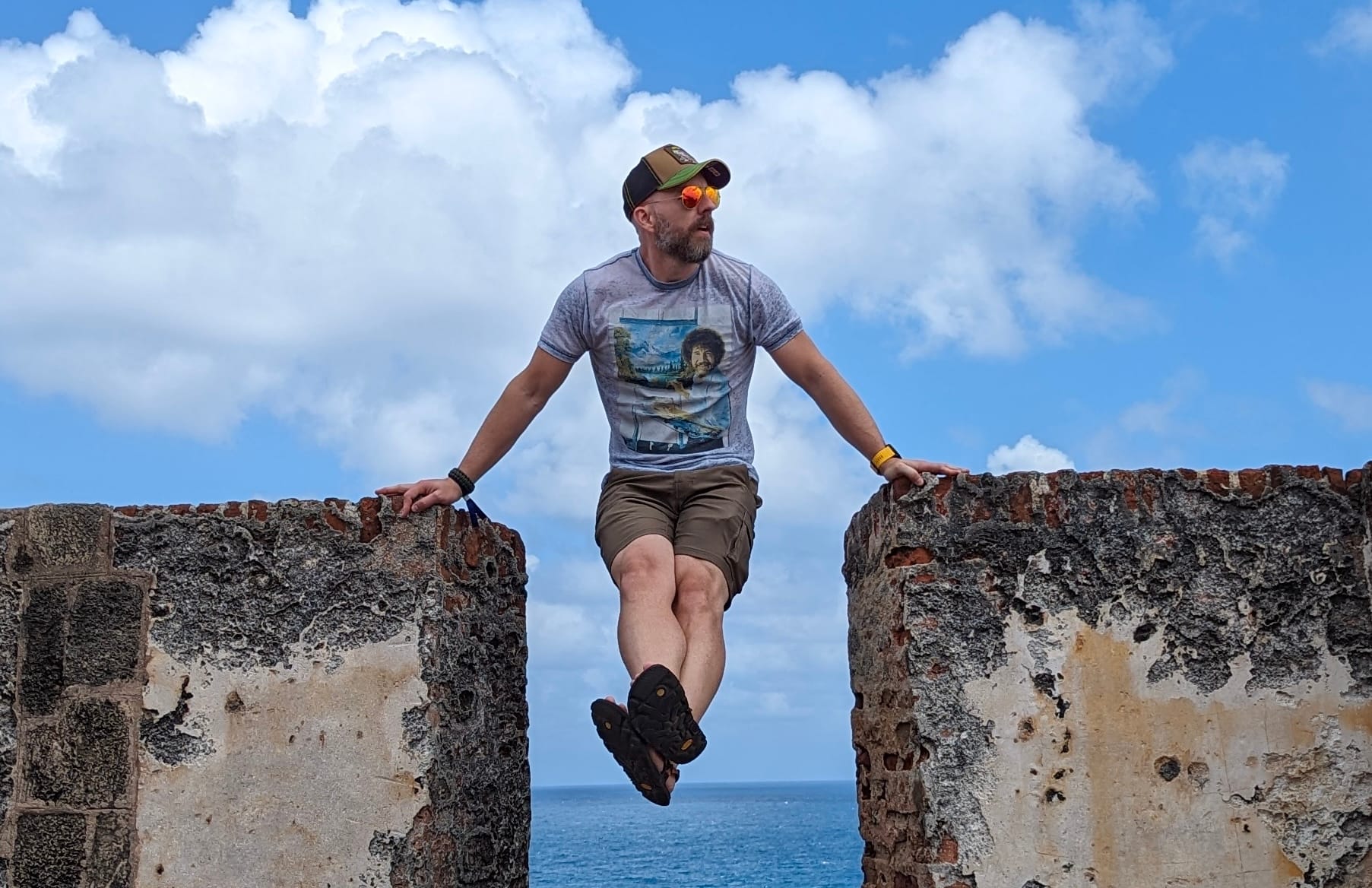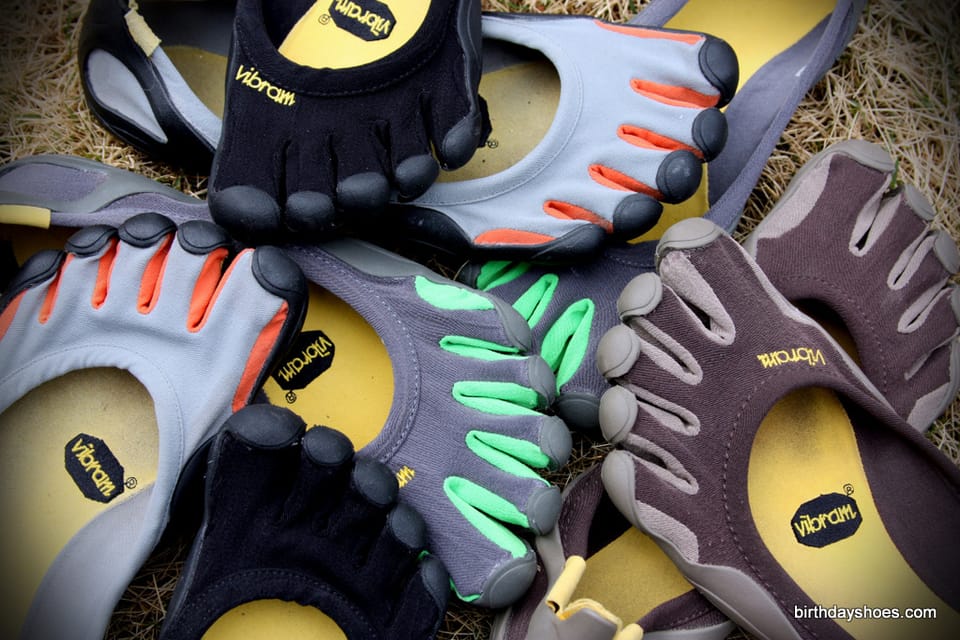Ridgewood Turkey Trot 8K—Or, how to do barefoot all wrong
Like many runners and other athletes, I hold several concurrent goals in mind — most of which are ever-moving targets. First is the simplest and most familiar: the shifting distance goal. At first I just wanted to work up to a 10k. Then it was maybe 15…

Like many runners and other athletes, I hold several concurrent goals in mind -- most of which are ever-moving targets. First is the simplest and most familiar: the shifting distance goal. At first I just wanted to work up to a 10k. Then it was maybe 15k, then a half marathon. Now I'm signed up for my first full in March. I think that's probably it for me in terms of pushing my distance. Probably. Maybe.
I'm always working on my breathing, and keeping my arms swinging straight forward and back instead of indulging my habit of punching at some invisible spot that floats just in front of my chest. But the goal I easily put the most thought into is the constant improvement of my foot and leg mechanics.
The best way to get instant feedback on what you need to work on is, of course, running barefoot. Your body just won't stand for any nonsense if you listen to it, and barefoot helps you hear what it's saying. So one of my running goals was to work up to a 10k completely barefoot. I'm not there yet.
How's it going so far, you ask? Read on. But maybe make sure you haven't eaten recently.
I started running barefoot occasionally in spring of this year. It was the natural extension of my ever-more-minimalist training plan. As I am wont to do, though, I escalated too fast. Ended up getting some top-of-foot pain and had to scale back. Which was fine, since it was getting into the heat of the summer down here in the south. Didn't want to bake my feetsies.
I ran my first unshod 5k race in July. It was held on a stretch of recently built, unopened highway. (Read: free from glass and other debris!) It was relatively mild day for July, with perfectly overcast skies. Too much heat on the pavement wouldn't be a problem. I ran it in under 29 minutes, a 9:20 pace. Not fast, but I was pleased -- especially given how good I felt afterwards. I was the only barefoot runner there and felt proud.

Soon after the 8k, before my feet had warmed up.Fast forward a few months. I'd run a few other races in huaraches, including my second half marathon. My form's been improving. I was signed up for a Thanksgiving day Turkey Trot 8k. It was a fast, flat course that had more of an air of fun to it than other races. Seemed like the perfect race to get back into my barefoot escalation.
Thanksgiving morning was colder than it had been lately. These kinds of race days are a problem for me because I warm up so fast once I start running that I have to wear as few clothes as possible for the race, but waiting around beforehand is torturous. Waiting in the corral I had to hop around to keep myself warm. (Yes, I know the trick of wearing disposable clothing and tossing it, but even that can get expensive if you do it often!)
I got the usual questions and concerns about my feet. Aren't you worried about stepping on glass? Or on a nail? Doesn't that hurt your heels? And so on. I answered politely. Of course I'm worried, but not much. I've gotten used to glancing at the ground ahead kind of like quick glances in your side mirrors while driving. No, it doesn't hurt my heels — running barefoot is different than running in trainers.
Then we were off. I felt great. I warmed up quickly and kept a solid pace. I passed more people during this race than any other that I can remember, though that's probably more a result of this being a bigger, family-oriented type of race than it was my being speedy. Lots of inexperienced runners not knowing how best to place themselves in a corral, runners not moving to the side to tie their shoes or walk, that kind of thing. No biggie — I was still doing okay. I even felt truly fast was on the uphills, where forefoot running always seems to help me move better.
In the last mile or so I could feel a little bit of pain in my feet. Didn't think much of it. Then my right big toe got some sharp pain for a few minutes, but it went away as quickly as it had come. I'd find out later that this was because a large blood blister had formed and then torn.

I crossed the finish line with a 9 minute pace overall, which I was very happy with. Inspecting the aftermath I noticed a little blood but it looked like just a scrape so I poured some water over my feet and went back to the finish to watch my friends come in.
My feet began to ache a little more as we walked back to the car, enough to finally hold my attention. Then as my feet started to properly warm up in the heated car they really started to hurt. I went from being mildly concerned to distracted to completely unable to concentrate. The entire second half of the drive home consisted of me doubled over holding my feet, shuffling and gripping them to find some position that relieved even a little of the pain.

Immediately after the race, before the pain had set in.
You know when your legs fall asleep and there's always that moment when they're tingling back awake where it actually hurts for a moment? It felt like the soles of my feet were frozen in the highest intensity of that moment for the entire day. I soaked, drained, and cleaned the various blisters as best I could. Several of them were deep beneath my callouses and took a lot of work to treat. Fortunately I've been dating a nurse for quite some time and she's rather used to me and my dumb schemes. Patching me up could easily be listed on her resume, or at least as one of her hobbies.
I was bothered by more than the pain, though. Why had my barefoot experience been so different in this race? It can't have just been the extra 3k, I thought. The answer was simple: it was just too cold to get proper ground feel. Sure I could feel my feet and the ground, but not to the extent that a 200 pound relative novice needs to. I ran too hard, too fast, and without as much attention to form. The damage tells that story, especially given that my first barefoot race didn't result in any injuries at all. Not a single scuff from that one.
This is not meant to be a treatise against barefoot running, by any means. But it is meant as a warning. Be reasonable. Be humble. Be prepared. And also be aware that if you're not any of those things, be truly ready and willing to suffer the consequences. I was an idiot on that day and now I have to drastically scale back my training with my first marathon only three months away.
I've heard it said before, but it's worth repeating. Injuring yourself during your training — for any athletic event or goal — is not a badge of honor. It's a sign that you weren't ready yet. It's a sign that you're doing something wrong. It's a sign that you're doing too much, too fast.
It's probably a sign that you're a stubborn idiot, like me. Seriously, I would've rather stepped on that ever-elusive nail that everyone worries about than walk around like a penguin for as long as I've had to thus far. The biggest concern with barefoot running is not the various hazards that the uninitiated bring up in the corrals; what you really have to worry about is yourself.
Five days later... still waddling.




